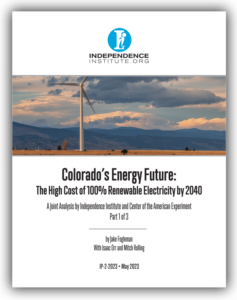Colorado Governor Jared Polis (D.) campaigned for his first term in office on a platform of transitioning the state to 100 percent renewable energy by 2040. In his first year in office, Polis unveiled an official government “roadmap” to do just that. Since then, he has signed into law no fewer than 55 climate bills and directed his executive agencies to craft at least a dozen new regulations aimed at making his roadmap a reality. Perhaps most consequential among those is the recent PUC decision to completely phase-out coal-fired generation in the state no later than January 1, 2031.
This three-part study does what no one else has been willing to attempt thus far. With the help of detailed modeling commissioned by the Independence Institute and conducted by energy researchers at the Center of the American Experiment, it aims to put a total price tag on the state’s energy transition while evaluating the reliability implications that come with it.
Part One of the study assesses the costs and grid reliability impacts of Governor Polis’ proposal to mandate the transition of Colorado’s electric grid to 100 percent renewable by 2040 (hereafter, the “Polis Plan”).
It also assesses an alternative scenario, referred to as the “Lower Cost Decarbonization” (LCD) scenario. Here, emissions reductions are achieved by utilizing reliable, clean technologies such as new nuclear power plants — including traditional, large nuclear power plants that have already demonstrated their viability at scale in other jurisdictions, and innovative small-modular reactors (SMRs).










